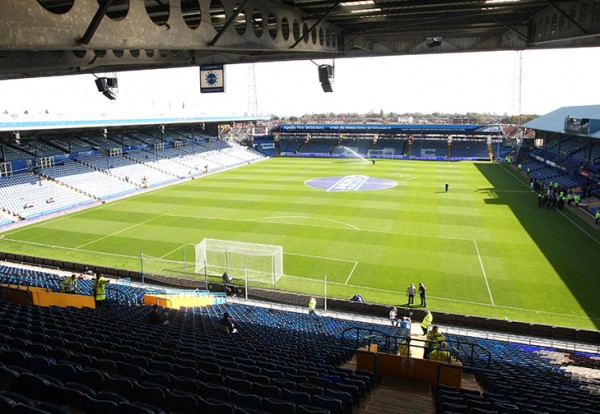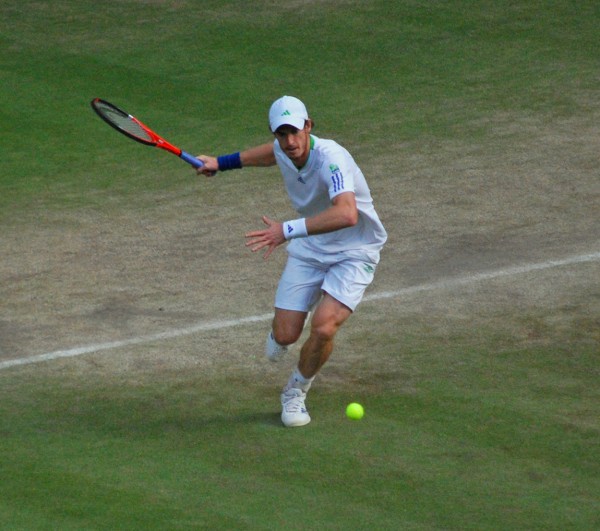 As was discussed on this blog, the rights to broadcast live Premier League football matches in the UK were recently auctioned off for a staggering £1.7bn per season. In the Premier League all of the clubs join forces to sell the rights collectively.
As was discussed on this blog, the rights to broadcast live Premier League football matches in the UK were recently auctioned off for a staggering £1.7bn per season. In the Premier League all of the clubs join forces to sell the rights collectively.
On the face of it, this collective selling would appear to be a potential breach of competition laws that prevents agreements between firms. However, despite some concerns and complaints, collective selling of football TV rights has been allowed, firstly because it is argued that it results in a more equal distribution of income amongst clubs, thus enhancing competitive balance and resulting in a more attractive product for the fans; secondly, because some of the revenue raised is redistributed down the football pyramid to lower league clubs.
In contrast to the Premier League, in Spain the clubs have traditionally sold their rights individually. This has been regarded as a significant advantage for the Spanish giants, Barcelona and Real Madrid.
 For the 2013–14 season in total clubs in the top division in Spain earned substantially less than their counterparts in England. However, Barcelona and Real Madrid earned around 1/3 of the total and more than any club in England, whereas the league winners that year, Atletico Madrid, earned only around half that of Cardiff City which finished bottom of the Premier League. Despite this, it is interesting to note that, at least in terms of league winners, the Spanish league has been more competitive than the German league despite the rights being sold collectively in the latter.
For the 2013–14 season in total clubs in the top division in Spain earned substantially less than their counterparts in England. However, Barcelona and Real Madrid earned around 1/3 of the total and more than any club in England, whereas the league winners that year, Atletico Madrid, earned only around half that of Cardiff City which finished bottom of the Premier League. Despite this, it is interesting to note that, at least in terms of league winners, the Spanish league has been more competitive than the German league despite the rights being sold collectively in the latter.
However, the way in which the rights are sold in Spain may be about to change. A few weeks ago, following pressure from the majority of clubs, the Spanish government approved a law that will introduce collective selling. The sport ministry spokesman described this change as allowing Spanish football to ‘adopt to modern times’.
It has been reported that there is a clause in the legislation that guarantees all clubs an increase in revenues above what they currently earn from selling their TV rights individually. This may have been essential to persuade the larger clubs, in particular Barcelona and Real Madrid, to support the new legislation.
The change in legislation still needs to be cleared by the Spanish parliament and there has been a threat of strike action. It is also unclear how the clause described above might affect the standing of the collective agreement under competition law.
Assuming the change does go ahead, it will be interesting to see how much the subsequent collective sale of TV rights raises. One estimate suggests a significant increase, but still much less than in the Premier League. Even more fascinating will be in the longer term to see what knock-on effect this has on the degree of competitive balance in the league.
Barcelona back collective TV rights in La Liga City a.m., Joe Hall (04/08/14)
Is the balance of power in Spain’s La Liga set to change after historic TV rights change Sport.co.uk, Jason King (02/05/15)
Court suspends Spanish football strike Financial Times, Tobias Buck (14/05/15)
Questions
- Why does competition policy typically prohibit agreements between firms?
- Do you think collective selling will always have a significant effect on the degree of competitive balance in a sports league? What other factors are likely to be important?
- Assuming the new legislation goes ahead, how do you think Spanish football will change?
- Can you think of any other situations where agreements between firms may be beneficial?
 I am an avid tennis fan and have spent many nights and in the last 10 days had many early mornings (3am), where I have been glued to the television, watching in particular Rafael Nadal in the Australian Open. Tennis is one of the biggest sports worldwide and generates huge amounts of revenue through ticket sales, clothing and other accessories, sponsorship, television rights and many other avenues. When I came across the BBC article linked below, I thought it would make an excellent blog!
I am an avid tennis fan and have spent many nights and in the last 10 days had many early mornings (3am), where I have been glued to the television, watching in particular Rafael Nadal in the Australian Open. Tennis is one of the biggest sports worldwide and generates huge amounts of revenue through ticket sales, clothing and other accessories, sponsorship, television rights and many other avenues. When I came across the BBC article linked below, I thought it would make an excellent blog!
There are many aspects of tennis (and of every other sport) that can be analysed from a Business and Economics stance. With the cost of living having increased faster than wages, real disposable income for many households is at an all-time low. Furthermore, we have so many choices today in terms of what we do – the entertainment industry has never been so diverse. This means that every form of entertainment, be it sport, music, cinema, books or computer games, is in competition. And then within each of these categories, there’s further competition: do you go to the football or the tennis? Do you save up for one big event and go to nothing else, or watch the big event on TV and instead go to several other smaller events? Tennis is therefore competing in a highly competitive sporting market and a wider entertainment market. The ATP Executive Chairman and President said:
We’ve all got to understand the demands on people’s discretionary income are huge, they are being pulled in loads of different avenues – entertainment options of film, music, sport – so we just need to make sure that our market share remains and hopefully grows as well.
As we know from economic analysis, product differentiation and advertising are key and tennis is currently in a particularly great era when it comes to drawing in the fans, with four global superstars.
However, tennis and all sports are about more than just bringing in the fans to the live events. Sponsorship deals are highly lucrative for players and, in this case, for the ATP and WTA tennis tours. It is lucrative sponsorship deals which create prize money worth fighting for, which help to draw in the best players and this, in turn, helps to draw in the fans and the TV companies.
 With technological development, all sports are accessible by wider audiences and tennis is making the most of the fast growth in digital media. Looking at the packaging of tour events and how best to generate revenues through TV rights is a key part of strategic development for the ATP. It goes a long way to showing how even one of the world’s most successful sporting tours is always looking at ways to innovate and adapt to changing economic and social times. Tennis is certainly a sport that has exploited all the opportunities it has had and, through successful advertising, well-organised events and fantastic players, it has created a formidable product, which can compete with any other entertainment product out there. As evidence, the following fact was observed in the Telegraph article:
With technological development, all sports are accessible by wider audiences and tennis is making the most of the fast growth in digital media. Looking at the packaging of tour events and how best to generate revenues through TV rights is a key part of strategic development for the ATP. It goes a long way to showing how even one of the world’s most successful sporting tours is always looking at ways to innovate and adapt to changing economic and social times. Tennis is certainly a sport that has exploited all the opportunities it has had and, through successful advertising, well-organised events and fantastic players, it has created a formidable product, which can compete with any other entertainment product out there. As evidence, the following fact was observed in the Telegraph article:
A 1400 megawatt spike – equivalent to 550,000 kettles being boiled – was recorded at around 9.20pm on that day [6/7/08] as Nadal lifted the trophy. The surge is seen as an indicator of millions viewing the final and then rushing to the kitchen after it is over. The national grid felt a bigger surge after the Nadal victory even than at half time during the same year’s Champions League final between Manchester United and Chelsea.
Tennis top guns driving ATP revenues BBC News, Bill Wilson (20/1/14)
The top 20 sporting moments of the noughties: The 2008 Wimbledon Final The Telegraph, Mark Hodgkinson (14/12/09)
 The global tennis industry in numbers BBC News (22/1/14)
The global tennis industry in numbers BBC News (22/1/14)
Questions
- How does tennis generate its revenue?
- In which market structure would you place the sport of tennis?
- What are the key features of the ATP tour which have allowed it to become so successful? Can other sports benefit from exploiting similar things?
- How has technological development created more opportunities for tennis to generate increased revenues?
- Can game theory be applied to tennis and, if so, in what ways?
- Why does sponsorship of the ATP tour play such an important role in the business of tennis?
- How important is (a) product differentiation and (b) advertising in sport?
 As was discussed on this blog, the rights to broadcast live Premier League football matches in the UK were recently auctioned off for a staggering £1.7bn per season. In the Premier League all of the clubs join forces to sell the rights collectively.
As was discussed on this blog, the rights to broadcast live Premier League football matches in the UK were recently auctioned off for a staggering £1.7bn per season. In the Premier League all of the clubs join forces to sell the rights collectively. For the 2013–14 season in total clubs in the top division in Spain earned substantially less than their counterparts in England. However, Barcelona and Real Madrid earned around 1/3 of the total and more than any club in England, whereas the league winners that year, Atletico Madrid, earned only around half that of Cardiff City which finished bottom of the Premier League. Despite this, it is interesting to note that, at least in terms of league winners, the Spanish league has been more competitive than the German league despite the rights being sold collectively in the latter.
For the 2013–14 season in total clubs in the top division in Spain earned substantially less than their counterparts in England. However, Barcelona and Real Madrid earned around 1/3 of the total and more than any club in England, whereas the league winners that year, Atletico Madrid, earned only around half that of Cardiff City which finished bottom of the Premier League. Despite this, it is interesting to note that, at least in terms of league winners, the Spanish league has been more competitive than the German league despite the rights being sold collectively in the latter.

